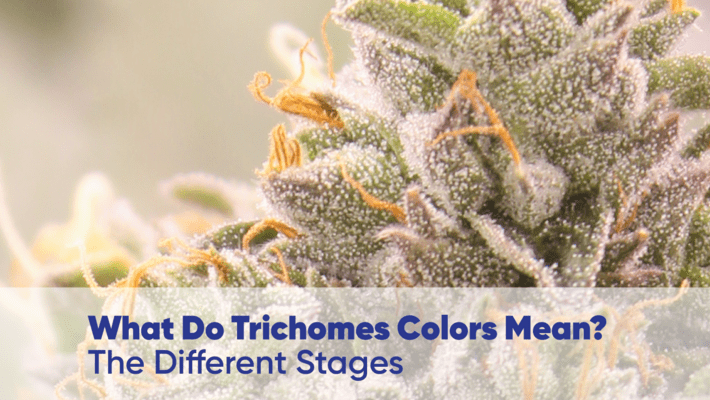
What Do Trichomes Colors Mean? The Different Stages
Published on 7/8/22
Talk to a chemist or botanist, and they will tell you that raising cannabis plants is a science: the exact soil pH, water levels, and plant nutrition. However, talk to any true stoner, and they'll tell you that raising cannabis is an art that must be done with creativity and love. There's a lot of truth to both sides, but one thing is for sure: at the end of the day, a great batch of bud is a work of art, with trichomes colors that are as vivid as any bird of paradise in the jungles of Borneo. If you want to grow cannabis, you need to understand the trichomes' development timeline, which in turn means a sense of what their color scheme entails and how it indicates development along the pathway towards maturity.
Growing Strong
"Seed to weed in three months" is a popular rule of thumb when it comes to growing cannabis. Any amateur enthusiast can plant seeds in a pot, leave them outside for the sun and rain, and expect to return to some decent bud growths. More careful cultivation results in larger buds with more concentrated flavor and THC. The right time to harvest can be challenging for amateurs to plan themselves since waiting extra time can enhance the power of your bud but can also result in the plant drying out prematurely. Trichomes ready to harvest provide insight into the perfect moment for picking, which is why they should be given careful attention.
What is a trichome? Simply put, they are the "hairs" you see growing on a cannabis plant. These aren't hairs at all, but outgrowths meant to protect the plant. Interestingly, THC is a protection for cannabis because it is lethal for insects that eat it - even though it is delightful for humans! This is also true of caffeine in tea; a fly that chews on the leaf will die from an overdose, but a human that weighs a million times more finds it to be a pleasant buzz. Trichomes aren't the only part of cannabis that provides a THC punch, but it is one of the most critical parts in terms of growing good ganja. Once the colors in trichomes have set, they indicate the level of THC you'll enjoy when smoking it, telling trichomes when to harvest. However, it is hard to see some trichomes cannabis grows, meaning you may need an HD camera to be sure of coloration.
Stage 1: Clear
 WikiMedia
WikiMediaIn the first stage, clear trichomes will look like watery mushrooms, sprouting off of the surface of a cannabis plant without having any color or depth to them. These clear sprouts form whenever plants come close to the point of harvest, but these glands have not yet produced maximum quantities of THC. Harvesting your bud while the trichomes are clear will likely leave you with very low-quality cannabis, suitable only for those with limited tolerance levels.
Stage 2: Cloudy
Stage 2 is cloudy with a chance of meatballs, indicating that these outgrowths are slowly developing the potency we all want from our marijuana. Depending on the strain, cloudy may indicate maximum THC concentration. However, this does not mean that an average strain with cloudy trichomes will hit as hard as a mega-marijuana strain; only that peak levels have probably been achieved. A sativa strain will usually hit peak value when half the trichomes are cloudy, but this also has the lowest level of CBD, meaning that the high will be the most intense.
Stage 3: Mixed Trichomes
When the color scheme of trichomes is between opaque and amber, it's the best time to harvest. Hybrid strains at the mixed point will have the greatest ratios of THC and CBD, making them optimal for whichever high you prefer: the type that relaxes, the type that energizes, or the type that makes you feel better as you play Smash Brothers. Since hybrids are rarely a 50-50 split between components, it may be better to harvest when the colors are more opaque or more amber since you may feel like you get more THC out of the opaque phase or more CBD out of the amber phase.
Stage 4: Amber
 Zambeza
ZambezaFor many types of bud, especially indicas, amber trichomes are the perfect spot: not so strong that they will melt your brain, but with an uptick in CBD that makes for a strong but mellow high. How long do trichomes take to turn amber? Often as little as a day, which is why it is recommended that growers check their plants very frequently at this point. Past this point, the trichomes may get darker and darker brown, indicating that they are past their peak and need to be harvested quickly, or they will begin to lose their potency altogether.
Do you grow your own cannabis? How have you planned for changes to development, like trichome colors? Let us know in the comments below!
